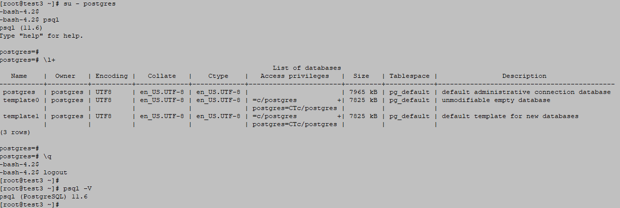

- Postgres app data directory how to#
- Postgres app data directory code#
- Postgres app data directory password#
Switch to Code View and modify the $filter expression to extract the property containing the start of the interval.Follow me on twitter for more posts like this Lesson goal Note that quotes must be used to surround the datetime value. To use the datetime value returned from the getInterval function, use the "ge" operator with a datetime column in the Orders table and select the Body parameter in the dialog. You can find more information on using the OData API and supported OData in the API Server help documentation. The API Server returns the descriptions and other documentation in the swagger document. Use the descriptions for each property to specify additional parameters such as the columns to retrieve, filters, etc. Add the HTTP + Swagger action and enter the swagger URL of the API Select the "Return Orders" operation.

Module.exports = function (context, data) ", to pass an empty payload object to the function. Add the following code to return the previous hour in a JSON object:.Select your Function App and select the Webhook + API scenario.Enter a name and select the subscription, resource group, App Service plan, and storage account.In the Azure Portal, click New -> Function App -> Create.To find new PostgreSQL entities since a certain time, you can write a function that retrieves a datetime value for the start of the interval: Otherwise, skip to the Create a Logic App section to send out emails to entities that match a filter. If your table has a column containing the creation date of a record, you can follow the steps below to write a function to check the column values for any new records.
Postgres app data directory how to#
The following steps below show how to retrieve PostgreSQL data in a Logic App. The HTTP + Swagger action provides a wizard to define the operations you want to execute to PostgreSQL. You can use the API Server in a Logic App to create process flows around PostgreSQL data. In the Java edition, the location of the data directory depends on your operation system: On Windows, this is the app_data subfolder in the application root. You will need to add a setting in the Application section of the settings.cfg file, located in the data directory. Access can also be restricted by IP address access is restricted to only the local machine by default.įor simplicity, we will allow the authtoken for API users to be passed in the URL. You can authenticate as well as encrypt connections with SSL. The API Server uses authtoken-based authentication and supports the major authentication schemes.
Postgres app data directory password#
To connect to PostgreSQL, set the Server, Port (the default port is 5432), and Database connection properties and set the User and Password you wish to use to authenticate to the server. You can then choose the entities you want to allow the API Server access to by clicking Settings -> Resources. The API Server is also easy to deploy on Microsoft Azure, Amazon EC2, and Heroku.Īfter you deploy the API Server and the ADO.NET Provider for PostgreSQL, provide authentication values and other connection properties by clicking Settings -> Connections and adding a new connection in the API Server administration console. See the help documentation for more information and how-tos. On a Java servlet container, drop in the API Server WAR file. On Windows, you can deploy using the stand-alone server or IIS. This article shows how to add PostgreSQL to an IFTTT (if-this-then-that) workflow in a Logic App.įollow the steps below to begin producing secure and Swagger-enabled PostgreSQL APIs:

OData enables real-time connectivity to data Swagger enables scaffolding, or code generation, of wizards in Logic Apps and Power Automate, as well as scaffolding Power Apps. Through standards-based interfaces like OData and Swagger, the CData API Server, when paired with the ADO.NET Provider for PostgreSQL (or any of 200+ other ADO.NET Providers), provides a native experience in Logic Apps and Power Automate with PostgreSQL.


 0 kommentar(er)
0 kommentar(er)
